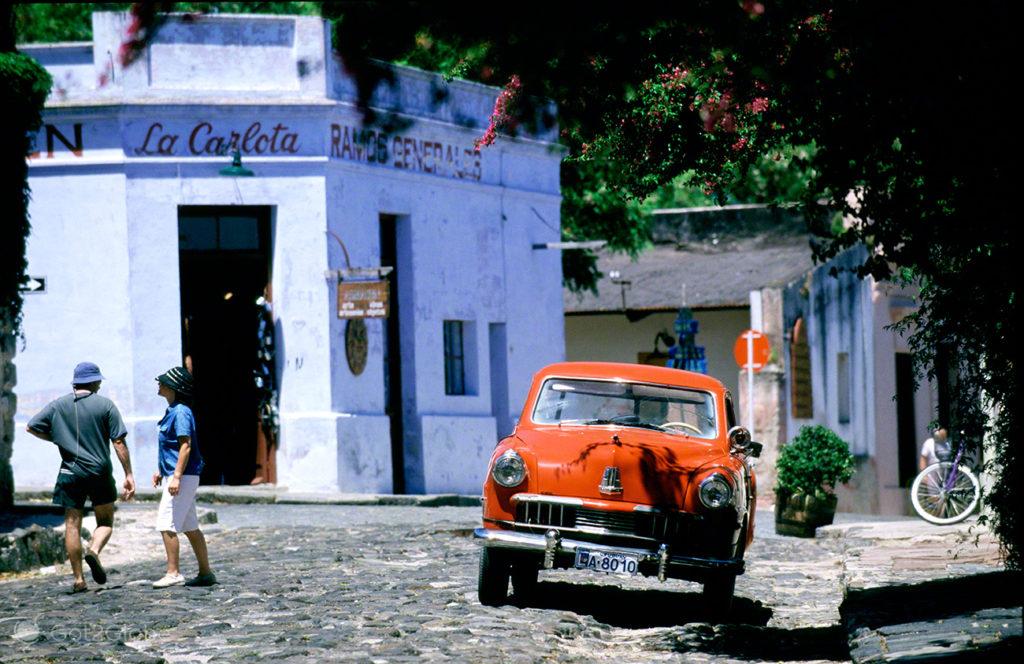Uruguay
How to go
VISA AND OTHER PROCEDURES
Portuguese citizens, Brazilians who wish to stay in the country for up to 90 days, do not need a tourist visa. At the time this text was created, Brazilian citizens or citizens from other MERCOSUR countries could enter the country showing only their identity cards.
HEALTH CARE
There is no health care scare in Uruguay. Only hepatitis A and tetanus vaccines are recommended as they are for most countries in the world.
For more information on traveling health, see the Health Portal of the Ministry of Health and Tropical and Traveler Medicine Clinic. In FitForTravel find country-specific health and disease prevention advice (in English).
TRIP TO URUGUAY
The best way to get to the Uruguayan capital, Montevideo, is to fly with the TAP (tel: 707 205 700) to São Paulo (Guarulhos) and from São Paulo to Montevideo. In total, the trip must last from 15 hours and cost a minimum of €1.300.
Must Do's
- Montevideo
- Colonia del Sacramento
- Punta del Este
- Jump
Explore
INTERNAL FLIGHTS
The small size of Uruguay deprives any sense of flying within the country. Even so, there are domestic charter flights operated by the airline Aeromas between Montevideo and Salto, Tacuarembó, Paysandú, Rivera and Artigas.
CAR RENTAL
The process is easy and practical. Most visitors can rent small utilities online and in advance for starting at €20 per day. To collect them, they only need a driving license from their own country and credit card. Driving is easy and usually not dangerous with some well built and well maintained motorways and local roads with few traffic lights but a good number of roundabouts and speed control speed bumps. Fuel costs around €1,35 per liter, this example for gasoline. There is a fixed toll for each passage on the motorways. It costs €2,60 for a conventional car.
TRUCK
Uruguay is served by a good number of buses operated by several competing companies. Most towns have their own terminal with departures to the closest or most important towns, invariably to Montevideo. Buses that cover longer distances are more modern, faster and more comfortable. The locals, on the other hand, make their routes with more stops and, in peak hours, they can be overcrowded. More information at OmniLines.
SHIP
The company buquebus operates ferries between Colonia del Sacramento and Montevideo, in Uruguay and Buenos Aires, the Argentine capital. Other companies with this and other routes are the Cologne Express and SeaCat Cologne.
TAXI
They are modern and very functional. All have a meter and charge around €1,50 for each km traveled.
OTHER
Remises are a kind of taxis that are more equipped, sophisticated and with a more professional service than taxis. They can be booked in advance and charge around €1,30 per km or €15 or €16 per hour. They provide transfers from Montevideo to the airport for around €35. More information at By Remises e Airport Transfer
When to go
Uruguay has four seasons well demarcated and inverted to the European ones.
Summer, from November to February, is the high season when it is possible to combine visits to Montevideo and the most interesting historical places in the country and also enjoy its best beaches. Bear in mind that, especially along the Uruguay River, temperatures in these months can be extremely high, averages of 26ºC, 27ºC, maximum in the order of 40ºC.
Winter is, as a rule, relatively cold, with averages of 10ºC, 11ºC and minimum around 0ºC. At any time, between the end of April and October, Uruguay can be hit by massive cold fronts coming from Antarctic latitudes that bring cold, wind and rain.
Money and costs
Uruguay's currency is the Uruguayan Peso (UYU). There are ATMs both in the most important cities and in smaller towns. Most upscale hotels, restaurants and stores accept credit card payments. Exchange offices are also abundant, particularly in Montevideo, Colonia del Sacramento and the resorts on the Atlantic coast. Uruguay has a cost of living similar to the Portuguese one, with obvious differences in prices between establishments in the most touristic places such as those inside the Colonia del Sacramento fortress or the Punta del Este resort and other less notorious places in the country.
ACCOMMODATION
Uruguay has developed a good network of HI Youth Hostels, mainly in villages along the coast but not only. With ISIC student card, these hostels offer very convenient discounts. In the main cities there are also residential, lodging, hostels and conventional hotels with types of accommodation for all tastes and prices, from €20 per double room in a very affordable guesthouse to several hundred euros per night in the most renowned hotels in Montevideo or Punta del Este.
FOOD
As with its Argentinean neighbors, the base of Uruguayan meals is beef, with the most appreciated pieces cooked over hot coals in grill. Another popular food, especially on the coast and in the warmer months, is seafood. Expect to pay €10 to €15 for the simplest meat meals, up to €100 for the finest and most elaborate meals in the best restaurants in Montevideo or Punta del Este.
INTERNET
You'll find free or paid Wi-fi everywhere (bars, hotels, hostels, shopping centers etc). In addition, there are also several hotspots with navigation prices ranging from €0,70 to €1,50 per hour.
You can also purchase a SIM card from Antel to use on a smartphone, tablet or a pen (USB stick) connected to your laptop

